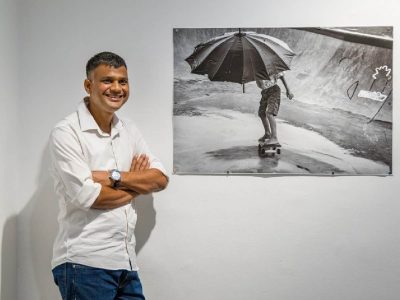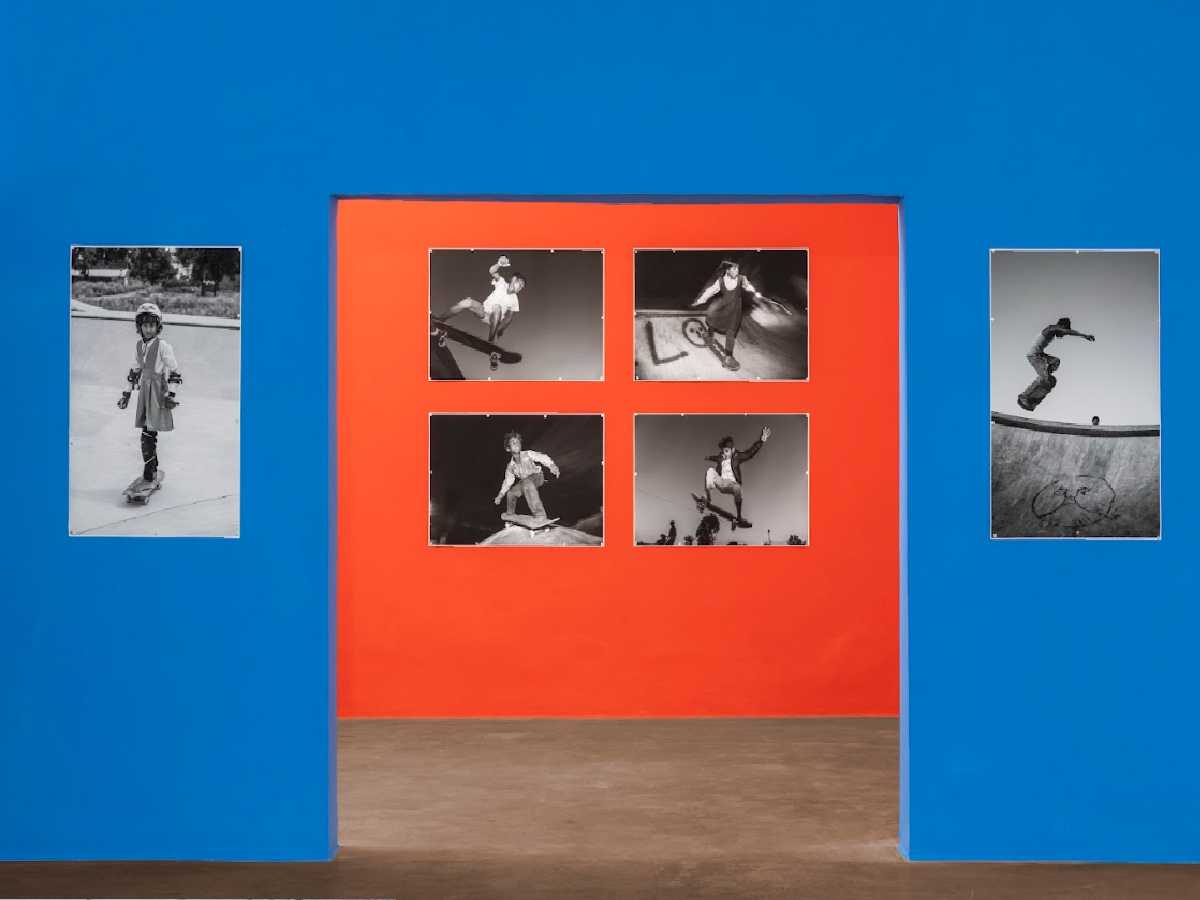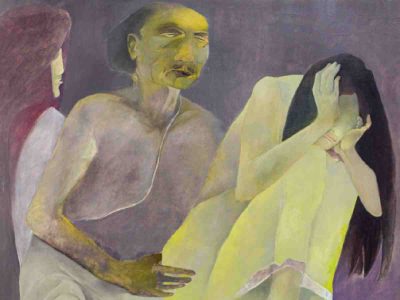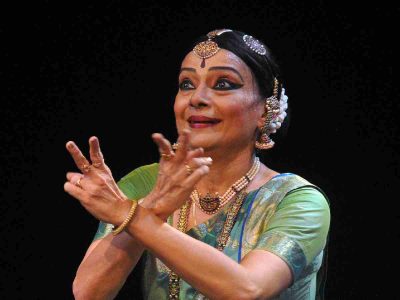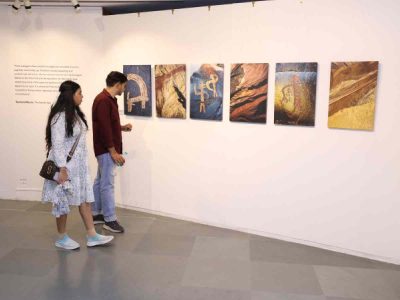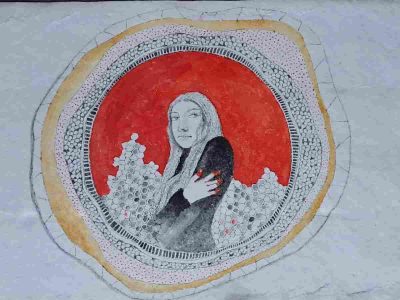Bachpan at Vadehra: As visitors step into Vadehra Art Gallery in New Delhi’s Defence Colony, they are drawn into a world of unfiltered joy and creative resilience. Bachpan, a solo exhibition by photographer Vicky Roy, celebrates the emotional and psychological landscape of childhood — particularly among children from underprivileged communities across India.
On view until May 30, the show features 45 evocative black-and-white photographs drawn from two ongoing series — Bachpan and Janwaar Castle — offering an intimate and deeply personal exploration of youth, play, and social transformation.
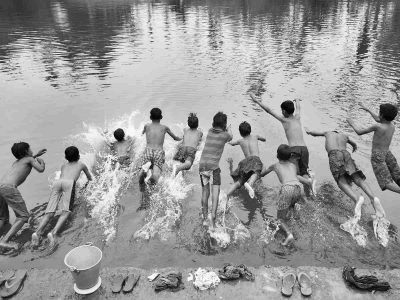
“This is a part of my journey too,” says Roy. “Through these children, I try to reconnect with my own lost childhood. I see in them the freedom I never had, the innocence I’m still trying to find.”
From the streets to the studio
Born in 1987 in West Bengal, Roy’s life changed drastically when he ran away from home as a child and found himself working as a ragpicker at the New Delhi Railway Station. His fortunes turned when he was taken in by Salaam Baalak Trust, an NGO that rehabilitates and empowers street children.
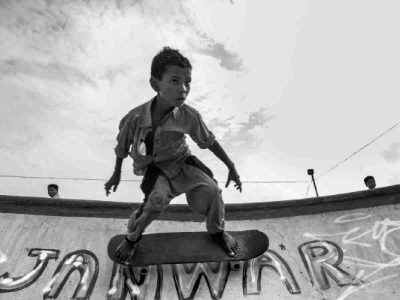
Encouraged by mentors at the Trust, Roy discovered photography and pursued formal training at Triveni Kala Sangam, later apprenticing under Indian photographer Anay Mann. His breakout moment came in 2007 with his first solo exhibition, Street Dream, supported by the British High Commission.
Also read: Power of Energy: A solo exhibition of paintings by Nilansu Bala Sasamal
Since then, Roy’s journey has included documenting the reconstruction of the World Trade Center in New York for the Maybach Foundation, publishing two books — Home Street Home (2013) and Everyone Is Good at Something (2024) — and participating in international art events such as the Houston FotoFest Biennial and Kochi–Muziris Biennale. He was awarded the MIT Media Fellowship in 2014 and was listed in Forbes Asia’s ‘30 Under 30’ in 2016.
Rediscovering childhood through the lens
Bachpan is the result of Roy’s extensive travels through Odisha, Jharkhand, Chhattisgarh, Rajasthan, Delhi, Maharashtra, and West Bengal, where he observed children at play in narrow lanes, empty fields, and chaotic construction sites — places transformed into playgrounds through sheer imagination.
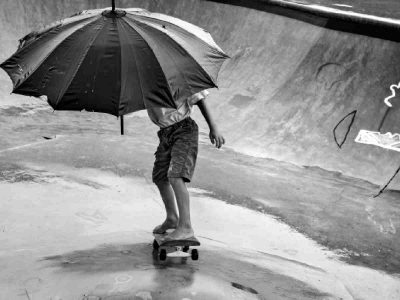
“These children don’t have expensive toys or gadgets,” says Roy. “But they invent their games, create rules, and find joy in what they have. That kind of creativity is priceless.”
The photographs portray barefoot races through muddy lanes, impromptu cricket matches with makeshift bats, and moments of daring on tree branches or parked trucks. The sense of freedom is palpable, with children often pictured in motion — laughing, chasing, jumping, or simply resting after a day of adventure.
“There’s an environmental logic to their games,” Roy explains. “They upcycle materials, share naturally, and follow rules they create together. There’s something deeply democratic in how they play.”
Janwaar Castle: Skateboarding as social change
The second series, Janwaar Castle, spotlights a transformative community project in rural Madhya Pradesh, where volunteers from India and Germany built a skatepark in the village of Janwaar in 2015. The park has since become a hub for empowerment, especially for girls and children from marginalised communities.
“It was amazing to see how skateboarding, something so urban and alien to a village, became a tool for equality and growth,” says Roy. “Girls got to go first, kids had to attend school to skate — the rules changed lives.”
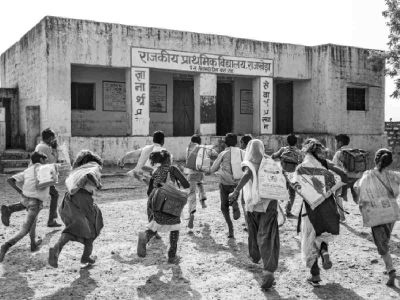
His photographs capture not just the thrill of skateboarding but the subtle shifts in societal norms — from breaking caste barriers to promoting gender equality. Children once confined by geography and custom are seen here with wind in their hair and confidence in their stride.
Thirty percent of the exhibition’s proceeds will go towards the Barefoot Skateboarders Organisation in Janwaar, ensuring that the support goes back to the very community that inspired the work.
Also read: Of myth and memory: The contemplative world of Shabir Hussain Santosh
A powerful emotional response
Visitors to the gallery have responded with deep admiration for Roy’s work and the stories it tells.
“I was moved to tears,” said Neha Verma, a visual culture researcher. “There’s a raw honesty in the way Roy photographs children — it’s not sentimental, it’s real. You feel the joy and the struggle both.”
Aarav Malhotra, an art student from School of Fine Arts, said the exhibition reminded him of the universality of childhood. While the children in Roy’s work are from vastly different realities, he noted that “their games, their smiles — they feel familiar. It made me remember my own childhood with a sense of awe and melancholy.”
